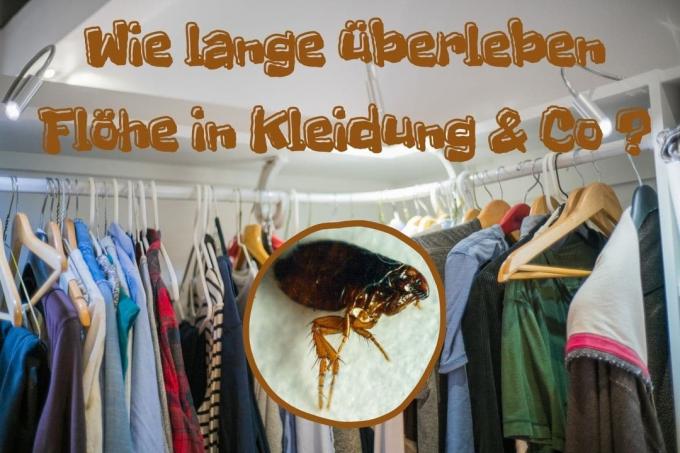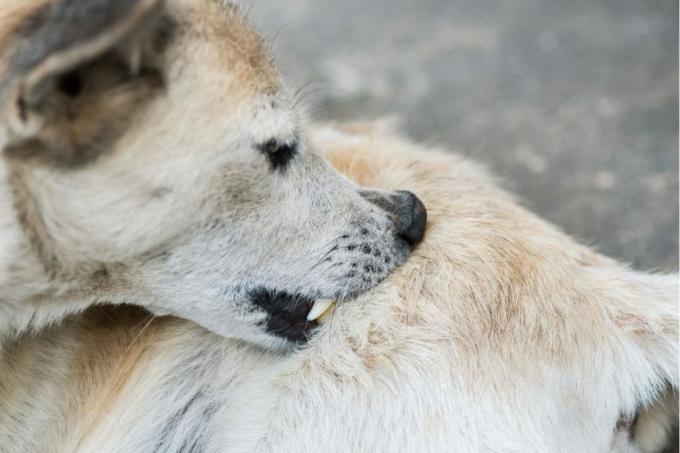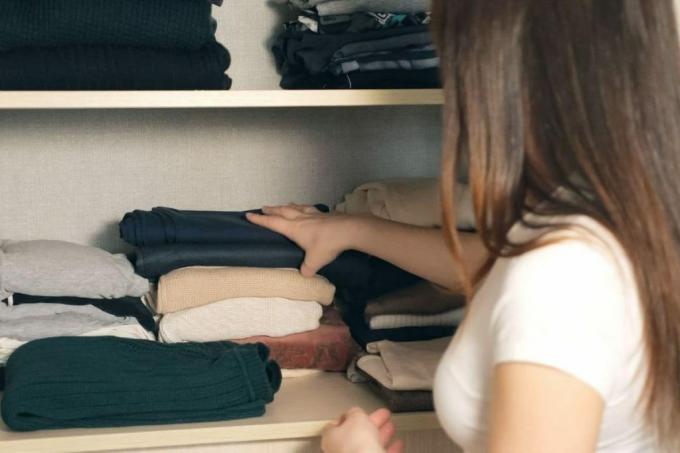
table of contents
- The way to the apartment
- way of life
- Nest fleas and fur fleas
- frequently asked Questions
The very thought of a flea makes it itchy. The annoying insects usually get into the home with pets or used clothing. How long can fleas survive in textiles?
In a nutshell
- Fleas (Siphonaptera) are blood-sucking parasites
- they can be transmitted from pets to humans
- Flea bites are uncomfortable and not harmless
- a flea can survive no more than two months without food
- a female flea lays 40 to 50 eggs a day
The way to the apartment
How do fleas get into the apartment? Cats usually have the insects in their luggage, which, as outdoor animals, can switch between the apartment, the garden and the surrounding area at will. You come into contact with other cats, but also with hedgehogs, birds, mice and other animals. Dogs can also bring dog fleas (Ctenocephalides canis) into the house after going for a walk. Dogs are also interesting for cat fleas (Ctenocephalides felis).
A flea can jump far. He can change hosts even without direct contact between the animals.

way of life
Fleas live on the blood of warm-blooded animals. They are attracted by the carbon dioxide in the air that humans and animals breathe. Adult fleas can survive for up to two months without food.
The lifespan of the fleas depends on the variety. Some species have a life expectancy of 18 months.
Appearance of the adult flea:
- one to two millimeters long
- wingless
- brown to black in color
- hard shell
- flat build
- six legs with claws
Life cycle:
The life cycle of a flea has five stages.
- Egg laying
- The larvae hatch
- multiple skins
- Pupation of the larvae
- Hatching of the animals

A female flea lays several hundred eggs in its life under favorable conditions.
Good conditions for reproduction: temperature above 5 degrees Celsius
Good conditions for larvae to develop, pupate and molt: 20 to 27 degrees Celsius, sufficient food and high humidity
The larvae feed on skin flakes and the excrement of adult animals. The larvae shed their skin several times during growth. After the third moult, they pupate. The pupae of the fleas can survive in the cocoon for several months without food. At room temperature, the fleas hatch after 10 to 14 days. If it's colder, it can take up to 12 months for the flea to hatch. Because of this, flea populations can differ significantly in their lifespan.
Note: A flea drinks 15 times its body weight in blood.
Nest fleas and fur fleas
Researchers have identified differences between nest fleas and fur fleas. Nest fleas have a strong bond with their nests in textiles such as clothing, pillows, mattresses, carpets, etc. They prefer a dark, dry environment and usually stay close to their host's sleeping place.
They leave this place at night to supply themselves with blood. Signs of this nocturnal visit are flea bites on the body. The human flea (Pulex irritans), a typical nest flea, can be found in mattresses or duvets during the day. He is very shy of light.
The fur flea, on the other hand, remains in the host's fur. Cat and dog fleas are examples of fur fleas. They attack people only in exceptional cases. Fur fleas like to settle in the neck area of pets. They are not sensitive to light.

Note: Be careful when cleaning the bird nest boxes in the garden in the fall. It is not uncommon for bird fleas to be found in the nesting boxes that are just waiting for a new host. Protect yourself with long sleeved clothing and gloves. Do not hold the nesting material too close to your body.
frequently asked Questions
Fleas are sensitive to very high and low temperatures. Wash clothes at 60 degrees if possible. Alternatively, you can freeze infected clothing for twelve hours. The harmful fleas do not survive temperatures below 3 degrees Celsius. Never hang used winter clothes unwashed in the closet. Have coats and thick jackets cleaned professionally. Clean your closets regularly. Use vinegar detergents.
If humans are infected with fleas, normal hygiene measures such as showering and changing clothes are sufficient. Thoroughly wash your clothes, curtains, bed linen and other home textiles. Vacuum the carpets and clean the apartment daily. After three to four weeks, the rooms should be free of fleas again.
A flea bite usually manifests itself in humans in the morning as a severe itching. Small red dots that are close together and form what is known as a “road” are a typical sign. Small wheals can develop. In pets, flea bites are not immediately visible due to the fur. The most noticeable initial symptom is the animals' constant scratching. When checking the fur, flea bites become visible.


